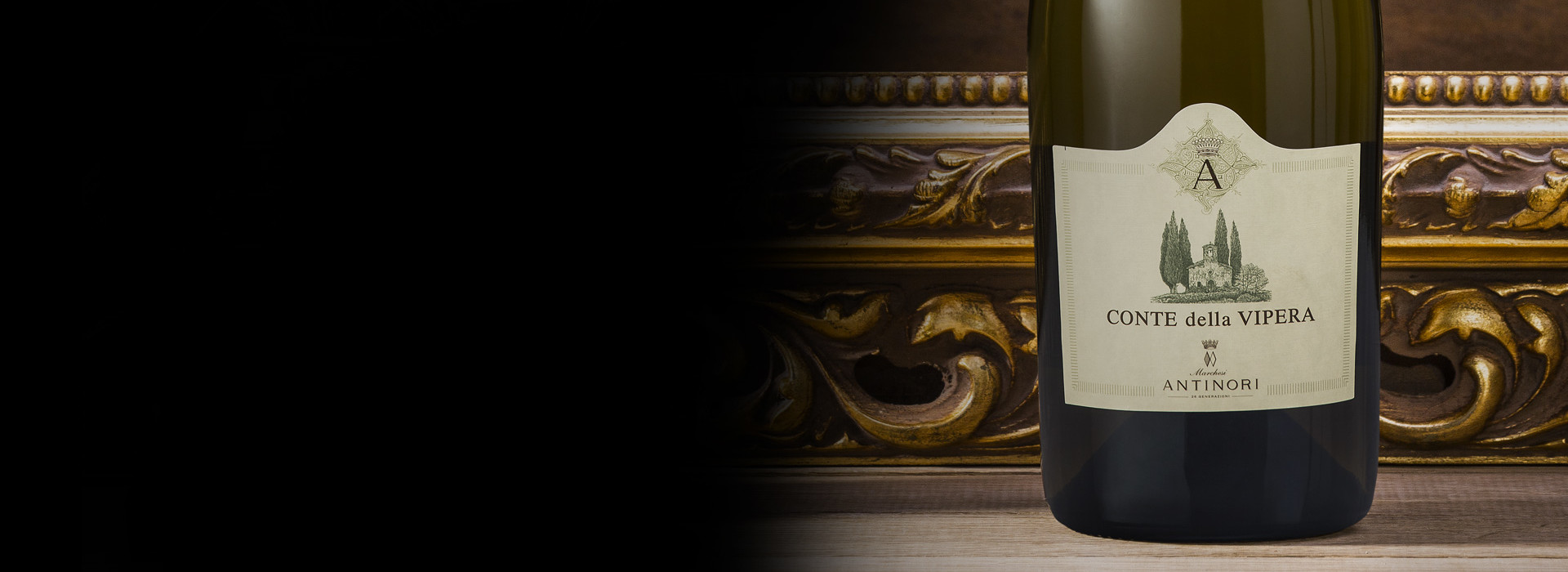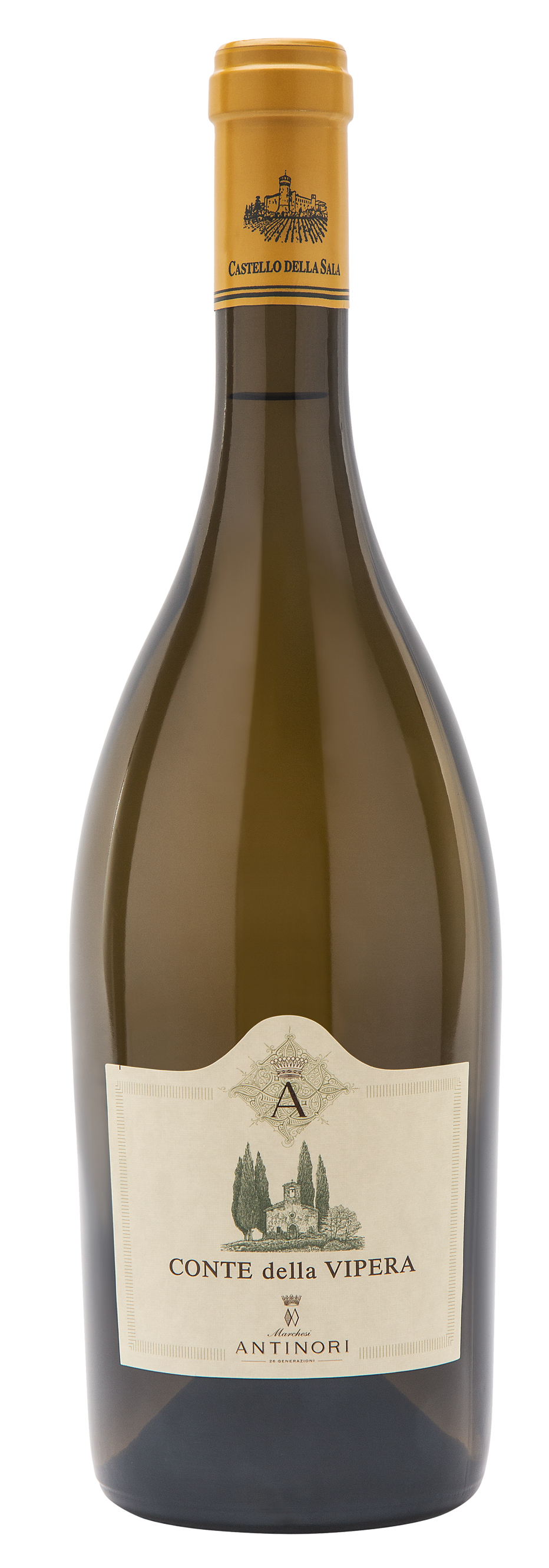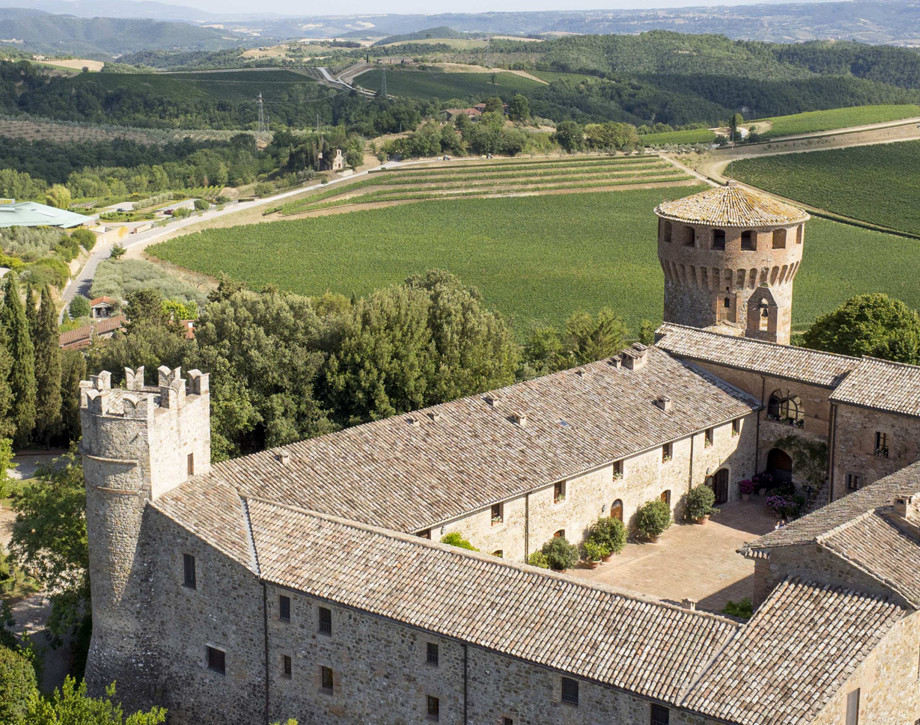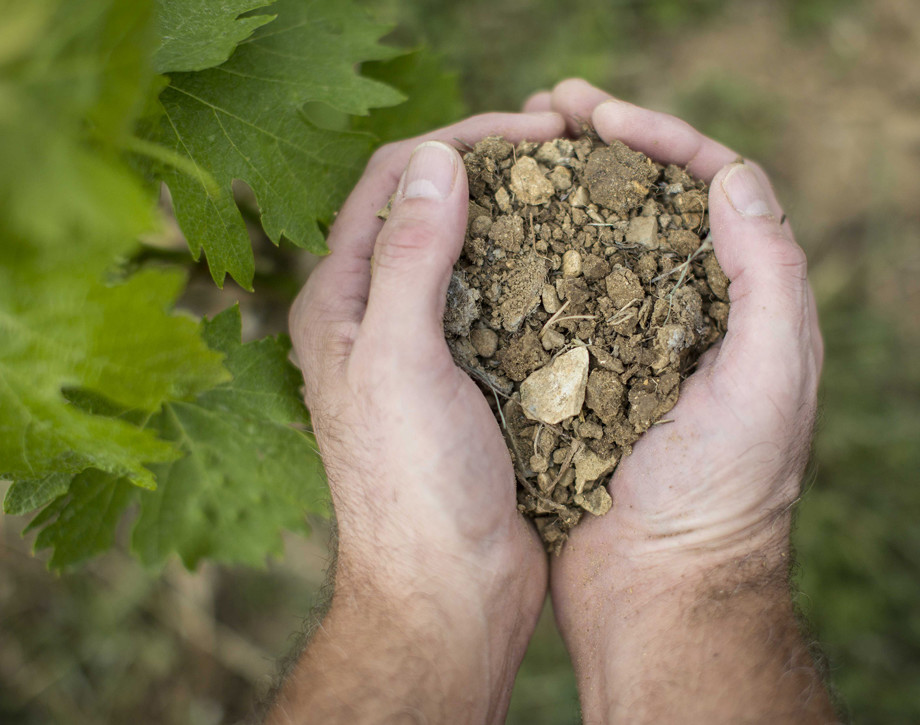Conte della Vipera

Climate
The 2014 vintage was distinguished by rain, and by a mild winter with temperatures above seasonal averages. During the spring and early summer, rainfall was copious, creating valuable reserves of groundwater in the soil. Towards the end of summer, significant temperature swings from daytime warmth to evening and nighttime coolness created the conditions for a long, gradual, and promising ripening. The mild weather which preceded the harvest allowed the picking of the Sauvignon Blanc and Sémillon to take place with healthy grapes, vibrant in their acidity and with an important varietal character.
Vinification
The vineyards utilized for the production of Conte della Vipera are located at an altitude between 825 and 1150 feet (250-350 meters) above sea level on soils rich in sediments of marine fossils with veins of clay, a terrain which gives a savory mineral character to the wines. The moment for picking the Sauvignon Blanc is determined on the basis of the rapport between the concentration of sugars and the maximum expression of the varietal aromas of the grapes. The bunches, hand picked, were immediately brought to the cellars and chilled on a refrigerated conveyor belt which lowered the temperatures of the grapes before they were pressed in order to maintain their varietal character. After a soft pressing, the must was left for several hours at a temperature of 50° Fahrenheit (10° centigrade) to favour a natural static settling of impurities. The must was then fermented in stainless steel tanks at temperatures held to a maximum of 61° Fahrenheit (16° centigrade). The wine then remained at a temperature of 50° Fahrenheit to block the malolactic fermentation and conserve to the maximum extent the wine’s aromas and flavors. The Sauvignon Blanc was then blended with the Sémillon to accentuate savor and add roundness and complexity.
Historical Data
The vineyards selected to be utilized for the Conte della Vipera are located at an altitude between 825 and 1050 feet (250-350 meters) above sea level on soils rich in marine fossils. The wine takes its name from first proprietors of the Castello della Sala, and the label shows the 13th century Saint John’s Chapel (the Cappella d San Giovanni) situated on the estate. The first vintage of Conte della Vipera to be produced was the 1997.
Tasting Notes
A delicate yellow in color with greenish highlights. The fruity and citric aromas fuse with notes of white peaches and litchees. On the palate, the wine, long and balanced, has character and structure-A vibrant vein of bracing acidity gives the wine an excellentn freshness.
Awards
Antonio Galloni 90/100 USA Wine Enthusiast 90/100 USA

The Wine
The wine is produced from a careful selection of Sauvignon Blanc and Sémillon. Conte della Vipera is a tribute to the original owners of the castle and its label shows an illustration of San Giovanni’s chapel (Saint John), a small chapel located on the estate.

Climate
The 2014 vintage was distinguished by rain, and by a mild winter with temperatures above seasonal averages. During the spring and early summer, rainfall was copious, creating valuable reserves of groundwater in the soil. Towards the end of summer, significant temperature swings from daytime warmth to evening and nighttime coolness created the conditions for a long, gradual, and promising ripening. The mild weather which preceded the harvest allowed the picking of the Sauvignon Blanc and Sémillon to take place with healthy grapes, vibrant in their acidity and with an important varietal character.
Vinification
The vineyards utilized for the production of Conte della Vipera are located at an altitude between 825 and 1150 feet (250-350 meters) above sea level on soils rich in sediments of marine fossils with veins of clay, a terrain which gives a savory mineral character to the wines. The moment for picking the Sauvignon Blanc is determined on the basis of the rapport between the concentration of sugars and the maximum expression of the varietal aromas of the grapes. The bunches, hand picked, were immediately brought to the cellars and chilled on a refrigerated conveyor belt which lowered the temperatures of the grapes before they were pressed in order to maintain their varietal character. After a soft pressing, the must was left for several hours at a temperature of 50° Fahrenheit (10° centigrade) to favour a natural static settling of impurities. The must was then fermented in stainless steel tanks at temperatures held to a maximum of 61° Fahrenheit (16° centigrade). The wine then remained at a temperature of 50° Fahrenheit to block the malolactic fermentation and conserve to the maximum extent the wine’s aromas and flavors. The Sauvignon Blanc was then blended with the Sémillon to accentuate savor and add roundness and complexity.
Historical Data
The vineyards selected to be utilized for the Conte della Vipera are located at an altitude between 825 and 1050 feet (250-350 meters) above sea level on soils rich in marine fossils. The wine takes its name from first proprietors of the Castello della Sala, and the label shows the 13th century Saint John’s Chapel (the Cappella d San Giovanni) situated on the estate. The first vintage of Conte della Vipera to be produced was the 1997.
Tasting Notes
A delicate yellow in color with greenish highlights. The fruity and citric aromas fuse with notes of white peaches and litchees. On the palate, the wine, long and balanced, has character and structure-A vibrant vein of bracing acidity gives the wine an excellentn freshness.
Awards
Antonio Galloni 90/100 USA Wine Enthusiast 90/100 USA

Castello della Sala
Castello della Sala is located in the Umbria region, not far from the Tuscan border, about 18 kilometers from the historic city of Orvieto. The Medieval castle’s property extends over an area of 600 hectares (1482 acres), 229 hectares (495 acres) are planted with vineyards at an altitude that varies between 220 and 470 meters above sea level (722/1541 feet) on the gently rolling hillsides that characterize the beautiful countryside in this area. Castello della Sala is the perfect place for growing white varieties. The vines grow in clay and calcareous based soils, rich in fossil shells, and they are well exposed to the rising of the sun with an excellent difference of temperature between day and night. The one exception to the rule is Pinot Noir, the only red variety that has found in this area ideal growing conditions to best express its full potential.

Soil
Soils rich in sedimentary deposits of marine fossils with veins of clay.


















